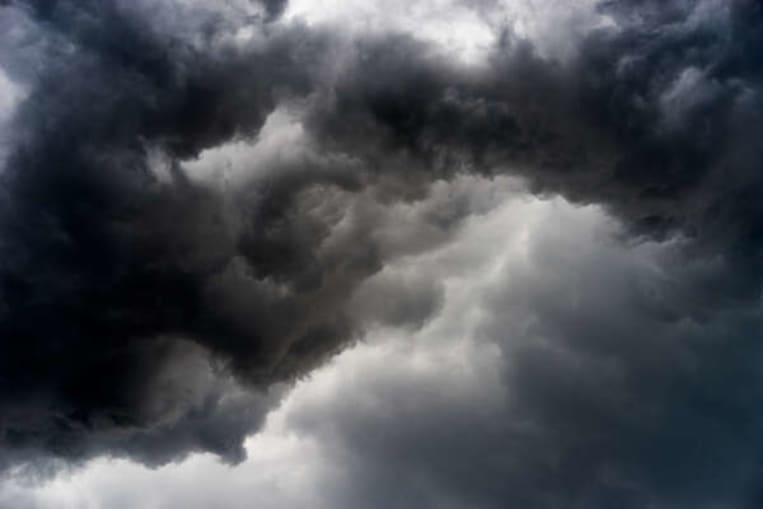
BBB Tip: Staying safe during a tornado, thunderstorm, or hurricane

(Getty)
Tornadoes and thunderstorms are most prevalent in the central and southeastern parts of the United States. However, these natural disasters can threaten people, property, and infrastructure across North America. These severe weather events typically occur during specific seasons but can occur anytime, which is why it is essential to be prepared, stay calm and know what to do in the event of these disasters.
What you'll learn
-
How to recognize the risks and warning signs of thunderstorms, hurricanes, and tornadoes.
-
Safety steps to take during severe weather events to protect yourself and your family.
-
The do’s and don’ts of responding to natural disasters to reduce harm and stay prepared.
During any severe weather watch, remain alert for approaching storms, watch the sky for indicators and listen to early warning systems on a weather alert station (Canada, U.S.) for safety information. In Canada, people can view all public weather alerts on the weather warnings page.
Thunderstorms and severe storms:
A thunderstorm is a rain-bearing cloud that also produces lighting. On average, a thunderstorm is 15 miles, (24 km), in diameter and lasts 30 minutes. Thunderstorms and severe storms can cause lightning, hail, flash flooding, and powerful winds that can damage buildings and uproot trees.
What to do during a thunderstorm warning?
When a thunderstorm warning is issued:
- When thunder roars, go indoors. Find a safe shelter that could be a home, office, or a shopping center. If there is no safe shelter quickly available, crouch down and try to have minimal contact with the ground.
- Be careful with lightning. If you are outdoors and you can hear thunder, you are in danger of being struck by lightning. Seek shelter if you are doing any outdoor activity.
- If you are in a car, stay in the vehicle and turn the emergency flashers. Make sure to stay off elevated areas such as hills or mountain peaks or tall structures such as isolated trees and electricity poles.
- Stay informed! Like you would in the event of any severe weather, continue to listen to local alerting systems for updated information or instructions in case of blockage in roads or your community nearby.
DO:
- Stay away from windows, doors and porches.
- Stay inside for at least 30 minutes after the last thunder.
- Avoid touching a vehicle's metal surfaces
DON’T:
- Take a shower, wash your hands, wash dishes or do laundry because water is a great conductor of electricity.
- Use electrical equipment, wiring, water pipes, and open areas near tall trees, towers or utility poles.
- Driving through a flooded roadway.
Hurricanes:
A hurricane is a powerful tropical storm with sustained winds of at least 74 miles per hour (119 km/h). Hurricanes can cause severe damage due to high winds, heavy rainfall, storm surges, and flooding. They can affect large areas and last for several days, posing significant risks to life and property.
What to do during a hurricane warning?
When a hurricane warning is issued:
- Prepare an emergency kit. Include essential items like water, non-perishable food, medications, important documents, flashlights, batteries, and a first aid kit.
- Secure your property. Board up windows, secure outdoor furniture, and ensure your home is as protected as possible against strong winds and flooding.
- Evacuate if instructed. Follow evacuation orders from local authorities immediately. Don't wait until the last minute, as roads can become congested and dangerous.
- Find a safe shelter. If you are not in an evacuation zone, identify the safest room in your home, typically an interior room on the lowest floor without windows.
- Communicate. Inform family members of your plan and ensure everyone knows where to go and what to do.
- Stay informed. Monitor weather updates and alerts from reliable sources such as the National Hurricane Center in the U.S., local news, and emergency services.
DO:
- Follow evacuation orders promptly.
- Stay indoors, away from windows and glass doors.
- Use flashlights for emergency lighting.
- Listen to emergency instructions and updates from local officials.
DON'T:
- Ignore evacuation orders or delay your departure.
- Use candles or open flames as a light source.
- Go outside until the all-clear is given, even if the storm seems to have calmed down (the calm eye of the storm can be deceptive).
- Drive or walk through flooded areas.
Tornadoes:
A tornado is a dark, violently rotating column of air that typically takes a funnel shape and usually occurs in a thunderstorm. Tornadoes are measured on an F-scale rating from EF0 to EF5 and can bring intense winds from 65 mph to over 200 mph or 105 kph to over 322 kph. Tornadoes have also been known to accompany tropical storms and hurricanes. Depending on its severity and wind strength, a tornado's lifetime can range from 10 minutes to over an hour.
What to do during a tornado warning?
When a tornado warning is issued:
- Act quickly! Take shelter immediately in a safe room such as a basement, storm cellar, or an inside room without windows on the lowest floor such as a bathroom, closet or center hallway. If you are in a mobile home, seek shelter in the closest sturdy building near you.
- If you are in a car, do not try to outrun a tornado in your vehicle. Instead, pull over and put your head down below the windows, covering your head and neck with your hands. If it is safe to do so, find a low, flat location.
- Stay informed! Be aware of local alerting systems in the U.S. and Canada for emergency updates and instructions.
DO:
- Try to cover your head and neck with your arms and use pillows or blankets as protection.
- If no basement or low-lying room is around, move under an object like a table once in your safe room. For more information, view the Federal Emergency Management Agency (FEMA) criteria on safe rooms during extreme wind events.
DON’T:
- Stay close to windows, doors, or outside walls.
- Park under an overpass or bridge.
Source: Canadian Government information found in the following links on tornadoes, thunderstorms, lightning and seasonal severe weather.
U.S. information found in following links on Ready.gov/Hurricanes, Ready.gov/Tornadoes and Ready.gov/thunderstorms.
BBB of Central Oklahoma, BBB Serving Arkansas, and BBB Serving Middle Tennessee and Southern Kentucky contributed to this article.
Still Need Assistance?
Contact Your Local BBB
Your local Better Business Bureau can assist you with finding businesses you can trust. Start With Trust®.
Additional Resources
Let BBB help you resolve problems with a business
Research and report on scams and fraud using BBB Scam Tracker
Learn more about the value of BBB Accreditation